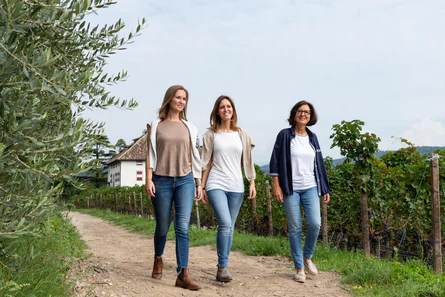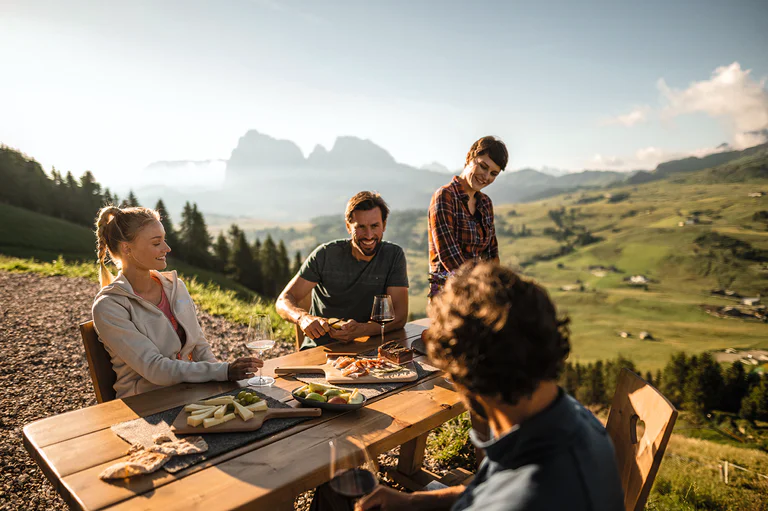For the Seppi family, those are more than just pretty words. Thus the vineyards in the Caldaro locations of Prey, Barleith, and Lavason are managed gently, there is a focus on undergrowth that is rich in species, and herbicides are avoided. “In the end, only a healthy, living soil brings forth healthy, resistant vines which, in turn, bear good grapes,” Seppi says.
The vines are supported in the classic pergola system, although not only as a nod to the predecessors at the estate, but also for practical considerations. Thus the Seppis consider the pergola trellis to be the optimal training method in the estate’s vineyards with a southern exposure. They distinguish themselves by hot days and cool nights which guarantee a regular maturation of the grapes and foster the development of extracts and aroma substances.
And in the end, an eye is also kept on tradition with the selection of the varieties, with the Seppi family greatly concentrating (and in fact even more and more) on indigenous varieties. Thus Lagrein and Schiava form the foundation of the Oberpreyhof in Caldaro. The latter is used for the classic Lago di Caldaro, and in addition to that, Cabernet Sauvignon, Chardonnay, and Yellow Muscat are also found in the assortment. In addition, grappas that are produced at the estate can be tasted in the vaulted cellar from the fifteenth century.






























